The Top Three Snakes Responsible For Medically Significant Snake Bites In South Africa.
Snake bites in South Africa are not as common as you would think, annually less than 12 people per annum die as a result of a venomous snake bite in South Africa. To put it into perspective more people die from allergic reactions and motorcar related accidents than are bitten and die from snake bite.
The three snakes which are responsible for the most medically important snake bites across the country:
Mozambique Spitting Cobra – Naja mossambica
Puff Adder – Bitis arietans
Bibrons Stiletto Snake – Atractaspis bibronii
Mozambique Spitting Cobra – Naja mossambica
These snakes bite a large number of people across the Eastern half of South Africa. Commonly encountered in Kwa-Zulu Natal,Mpumalanga, The North West, Gauteng and Limpopo.
The Mozambique Spitting Cobra is responsible for the majority of the serious snake bites that occur in South Africa, particularly in the Eastern half. Averaging only 1.2m in length these snakes are often found in residential gardens, particularly those bordering nature reserves. Their activity peaks just as the first rains of summer arrive, coinciding with the increase in amphibian activity. These snakes often enter homes especially in rural areas and game lodges being attached by the presence of potential prey. Patients are often bitten on the arms and hands while sleeping. Polyvalent anti-venom is used in the effective treatment of bites.
As their name suggests, this snake can spit/spray its venom with incredible accuracy, reaching targets up to 3m away, although when the venom enters the eye it is not fatal but should immediately be flushed out using by any bland liquid available to avoid any permanent damage
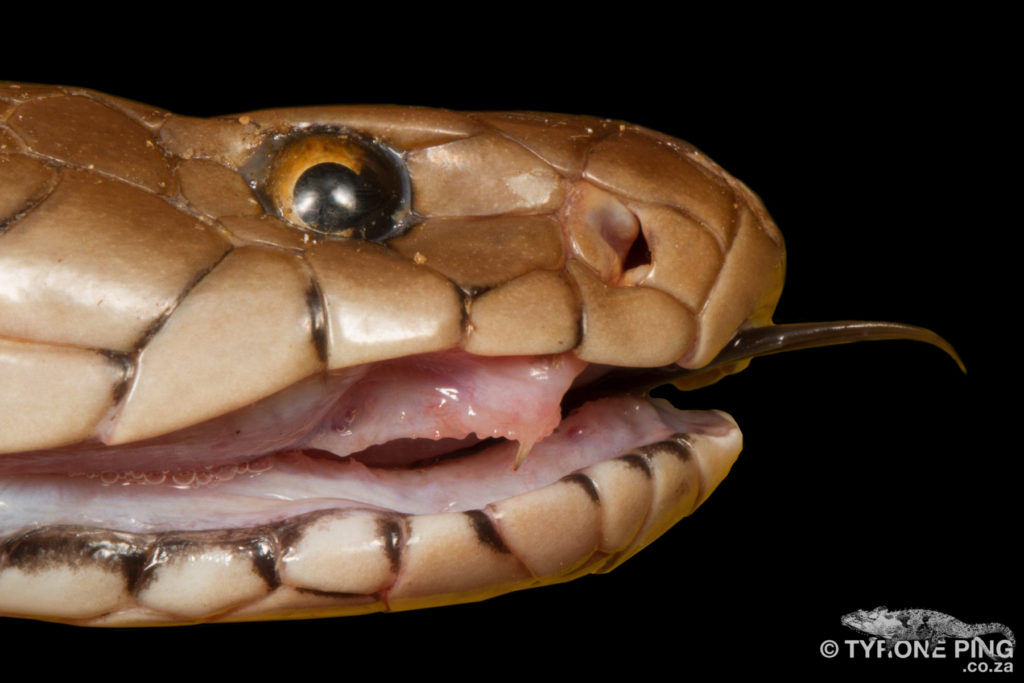
Short Fixed Front Fangs Of The Mozambique Spitting Cobra.
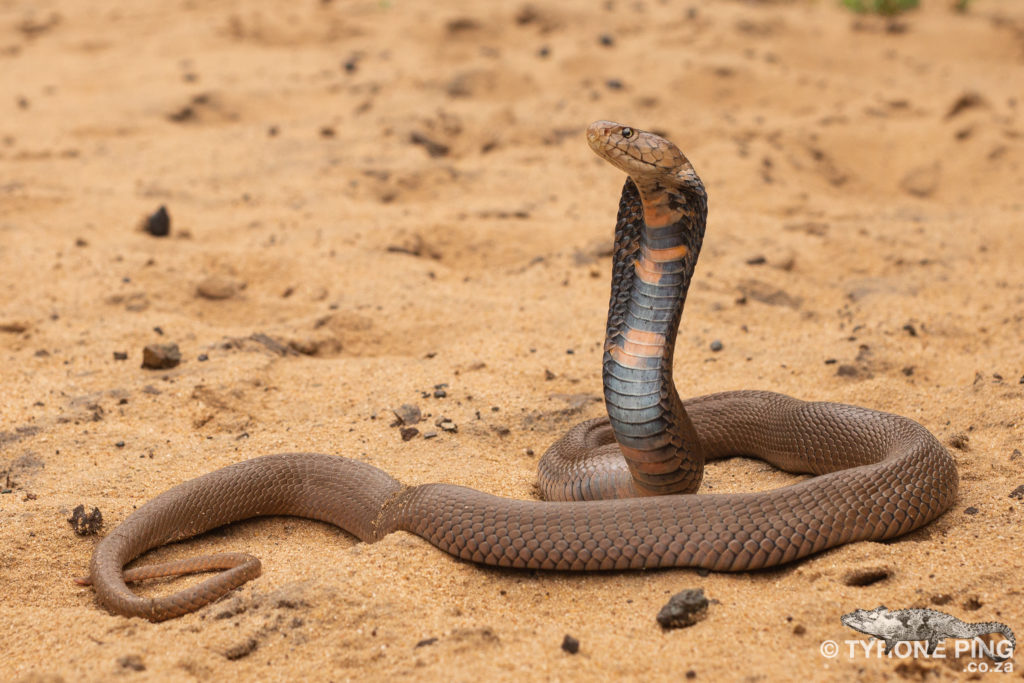
The Mozambique Spitting Cobra spreading hood in defensive pose.
Puff Adder – Bitis arietans
Is undoubtedly South Africa’s most widely-spread, common venomous snake. The Puff Adder is occurs in a large range of habitat, from costal bush, grassland, fynbos as well as montane habitat.
The Puff Adder is a snake with excellent camouflage, and it prefers to sit rather than flee. These snakes may remain in an ambush position for several weeks, waiting for a potential meal to pass by. They have a powerful cytotoxic venom which can lead to extreme pain, severe swelling, and blistering of the skin. Polyvalent anti-venom is used in the effective treatment of bites.
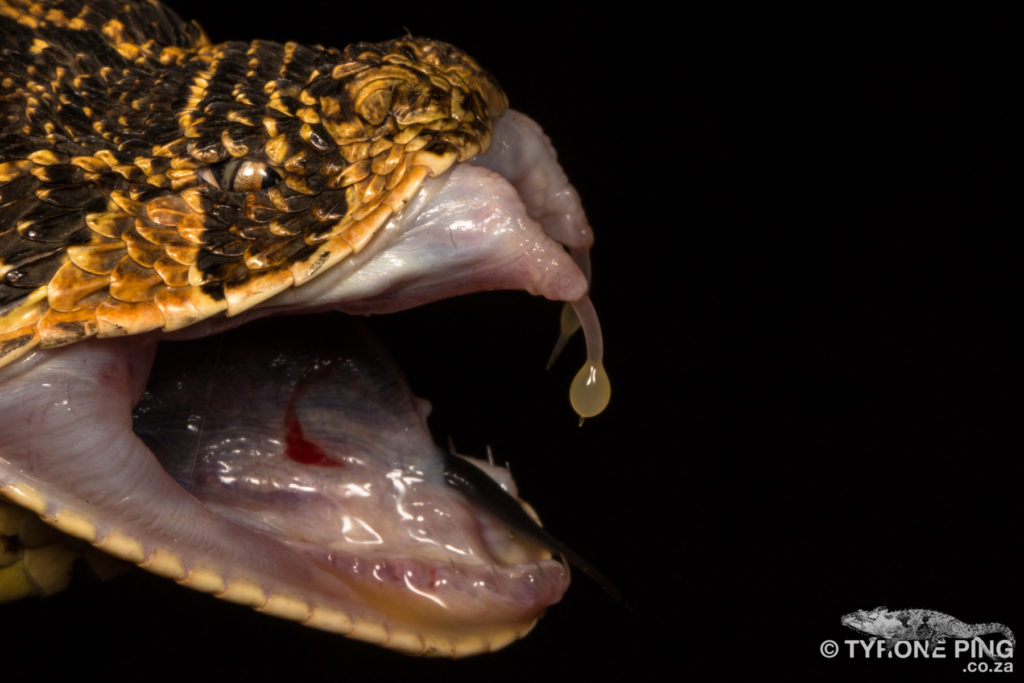
Hinged Front Fangs Of The Puff Adder
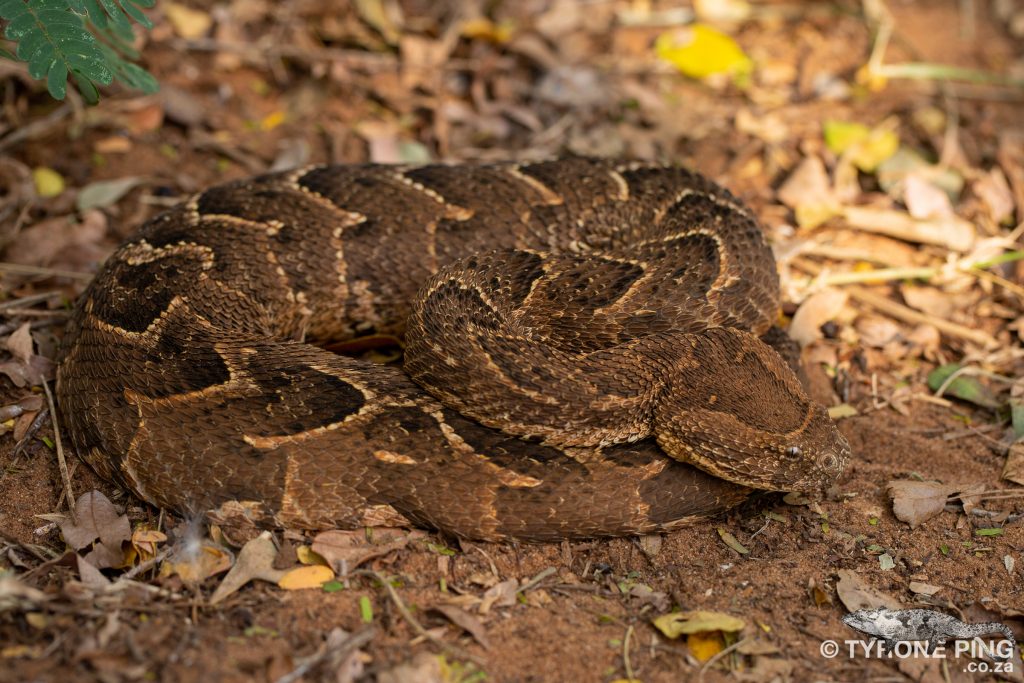
One of the many different colour variations of the Puff Adder
Bibrons Stiletto Snake – Atractaspis bibronii
With the onset of summer rains across the Eastern parts of South Africa, will bring out the Stiletto Snake as they are flushed out from saturated grounds and come to the surface after heavy rains.
These snakes are found in Namibia, Botswana, Swaziland and within South Africa in Kwa-Zulu Natal, Gauteng, Free State, North West, Limpopo, Mpumalanga and the Northern Cape. Being absent from the Western Cape and virtually the entire Eastern Cape.
An unassuming, small, dark brown snake with small eyes and a non-defined neck. Stiletto snakes are commonly found in the warm summer months, particularly on the roads at night after rain, in swimming pools, and in the turned-up topsoil. These snakes are responsibly for a significant amount of bites as people often mistakenly pick them, after incorrectly identifying them as either thread or house snakes.
The Stiletto Snake cannot be held safely behind the head and should never be picked up – they have long, movable fangs which they can stick out of the sides of the mouth and stab fingers with ease. The venom is not known to be lethal but can cause serious injury. We often see severe bites, where and amputations or permanent disfigurement fingers occur from bites of the Stilleto Snake.
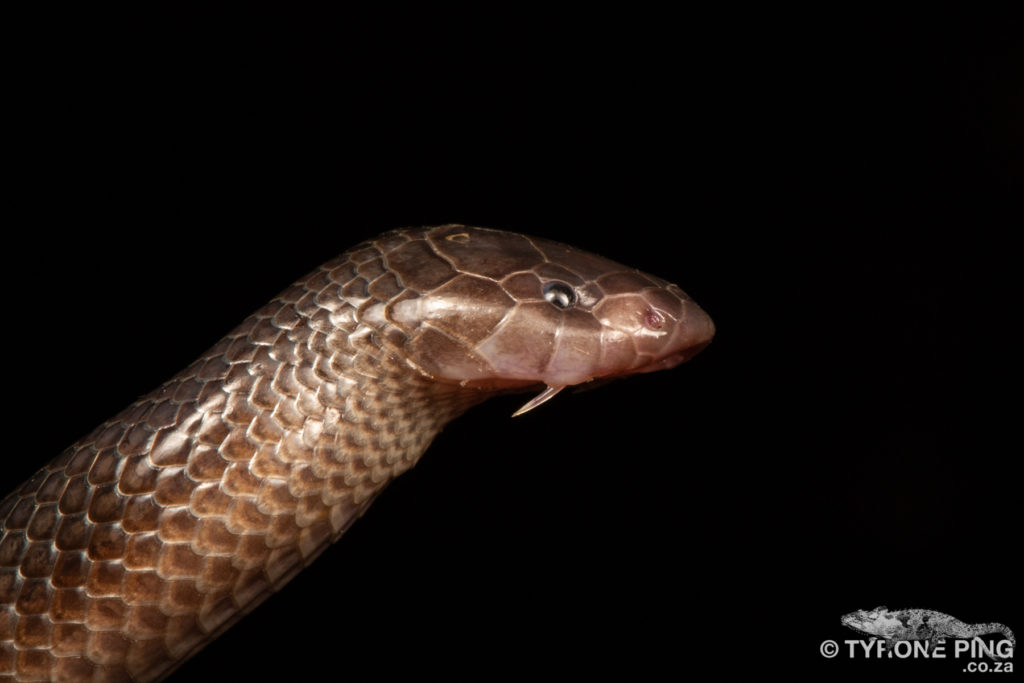
Impressive Fangs Of The Bibrons Stiletto Snake.
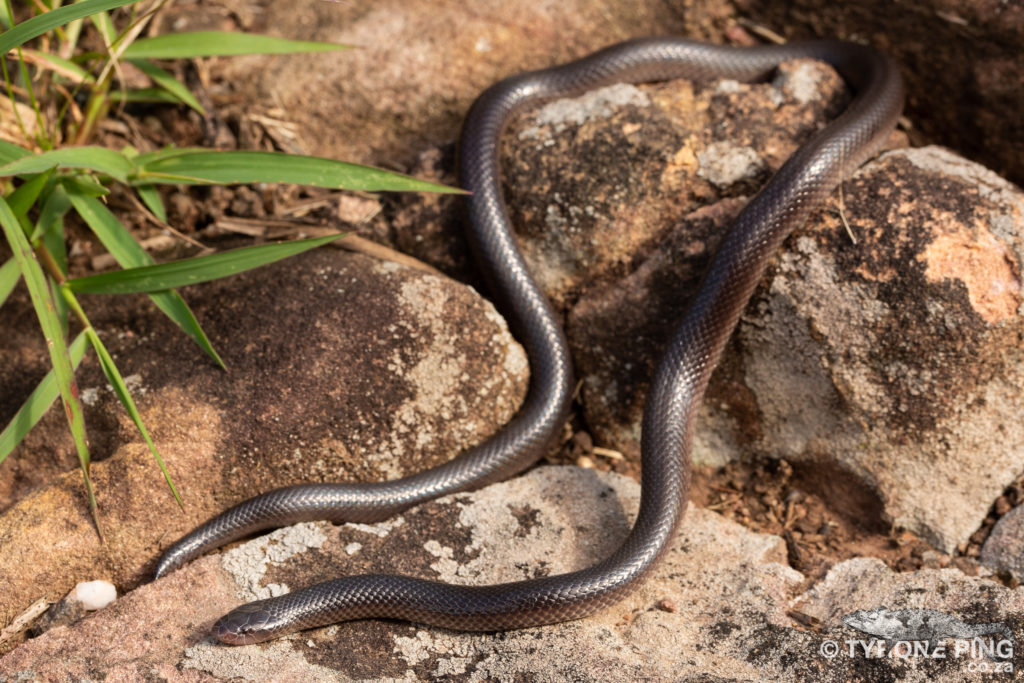


Another great picture Tyrone, super stuff.
Thanks Colin!
What treatment is required for a bite from the Stiletto snake?
The foot is swollen and turning red a week after the bite.
All snake bite should be treated as a medical emergency at a hospital. Their is n antivenom but bites are treated symptomatically.